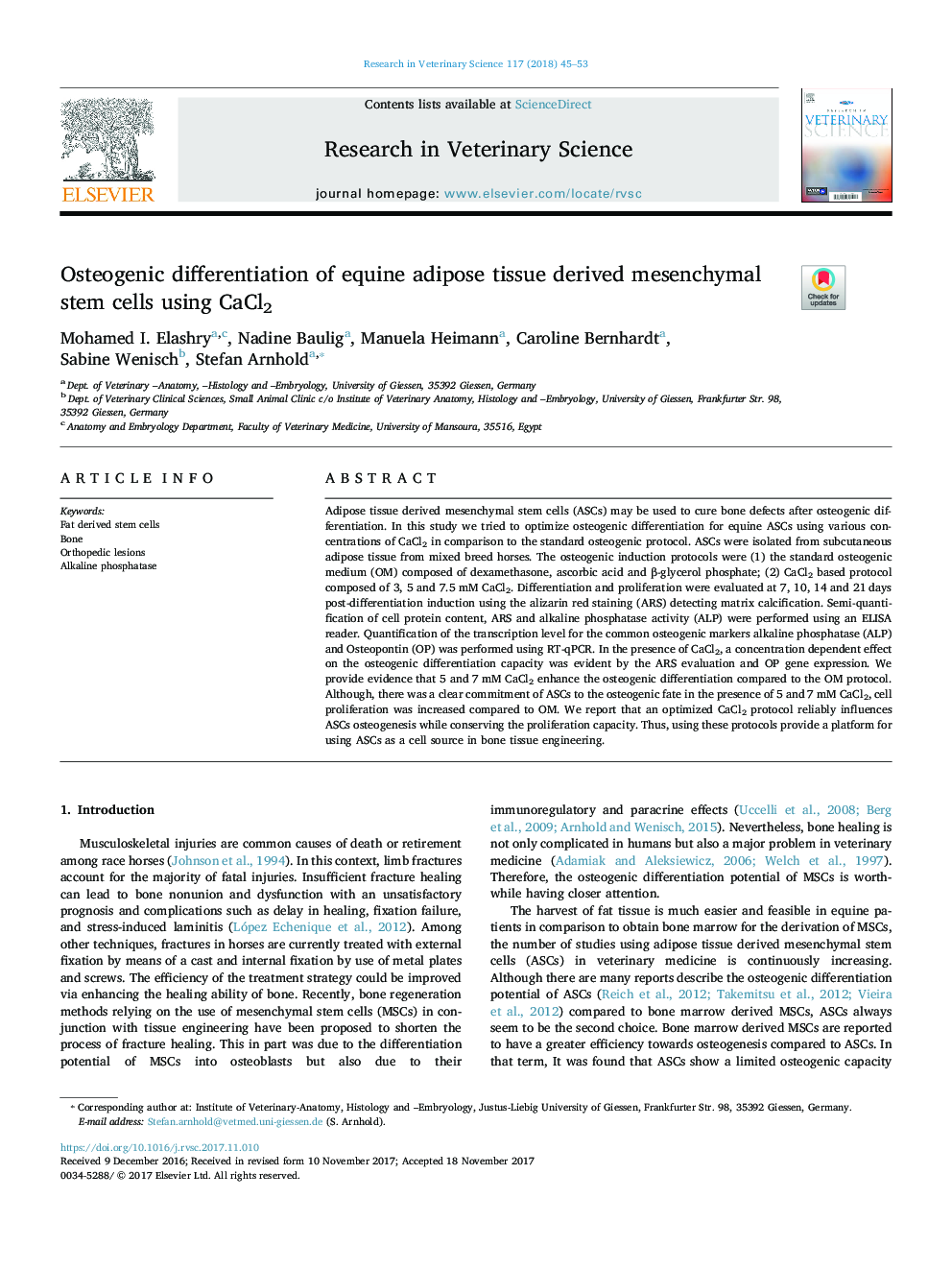| Article ID | Journal | Published Year | Pages | File Type |
|---|---|---|---|---|
| 8504008 | Research in Veterinary Science | 2018 | 9 Pages |
Abstract
Adipose tissue derived mesenchymal stem cells (ASCs) may be used to cure bone defects after osteogenic differentiation. In this study we tried to optimize osteogenic differentiation for equine ASCs using various concentrations of CaCl2 in comparison to the standard osteogenic protocol. ASCs were isolated from subcutaneous adipose tissue from mixed breed horses. The osteogenic induction protocols were (1) the standard osteogenic medium (OM) composed of dexamethasone, ascorbic acid and β-glycerol phosphate; (2) CaCl2 based protocol composed of 3, 5 and 7.5 mM CaCl2. Differentiation and proliferation were evaluated at 7, 10, 14 and 21 days post-differentiation induction using the alizarin red staining (ARS) detecting matrix calcification. Semi-quantification of cell protein content, ARS and alkaline phosphatase activity (ALP) were performed using an ELISA reader. Quantification of the transcription level for the common osteogenic markers alkaline phosphatase (ALP) and Osteopontin (OP) was performed using RT-qPCR. In the presence of CaCl2, a concentration dependent effect on the osteogenic differentiation capacity was evident by the ARS evaluation and OP gene expression. We provide evidence that 5 and 7 mM CaCl2 enhance the osteogenic differentiation compared to the OM protocol. Although, there was a clear commitment of ASCs to the osteogenic fate in the presence of 5 and 7 mM CaCl2, cell proliferation was increased compared to OM. We report that an optimized CaCl2 protocol reliably influences ASCs osteogenesis while conserving the proliferation capacity. Thus, using these protocols provide a platform for using ASCs as a cell source in bone tissue engineering.
Keywords
Related Topics
Life Sciences
Agricultural and Biological Sciences
Animal Science and Zoology
Authors
Mohamed I. Elashry, Nadine Baulig, Manuela Heimann, Caroline Bernhardt, Sabine Wenisch, Stefan Arnhold,
